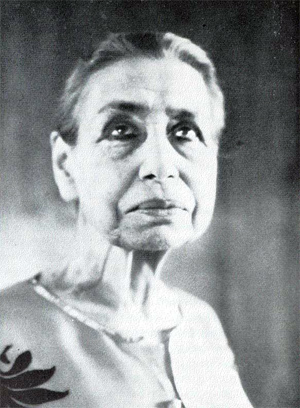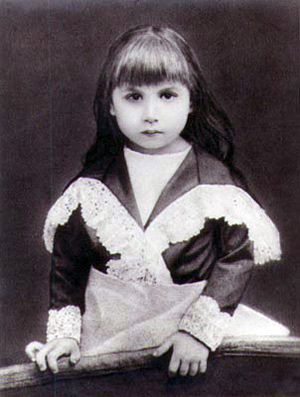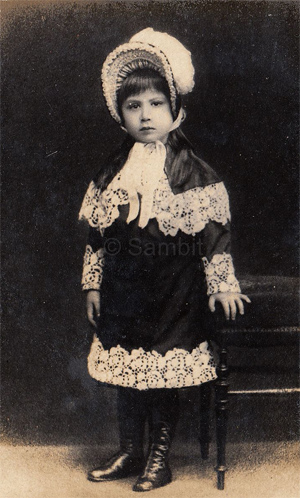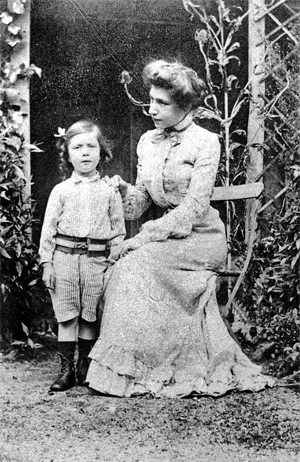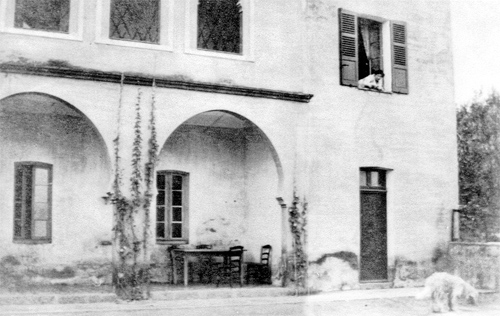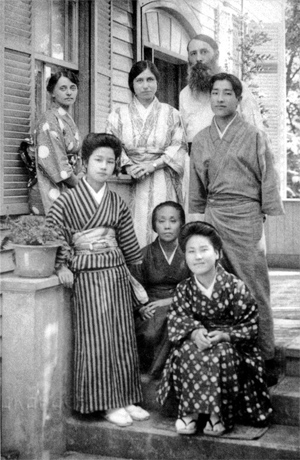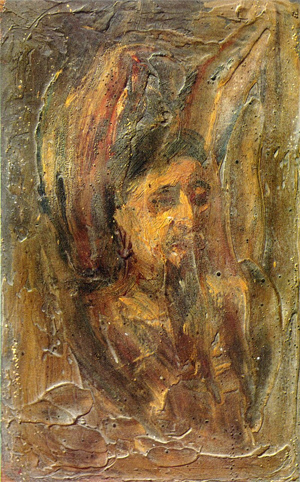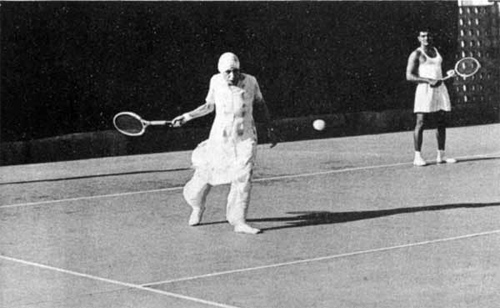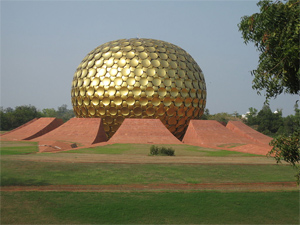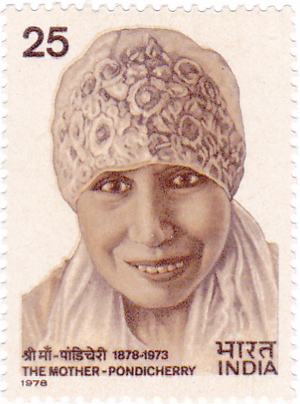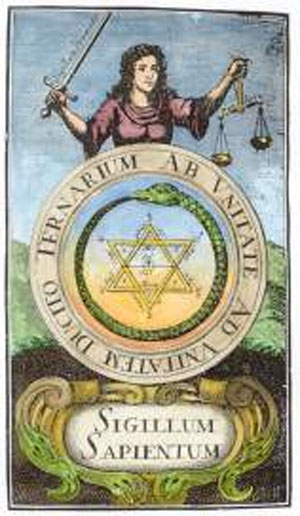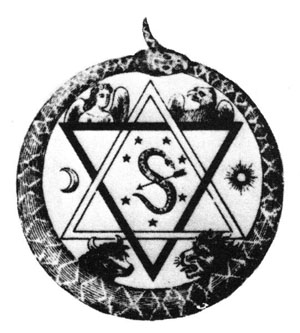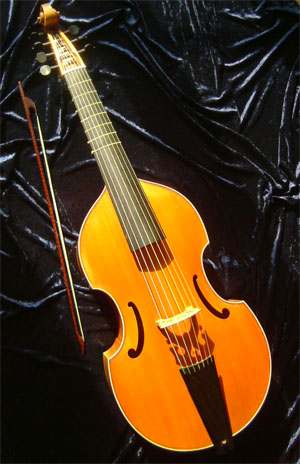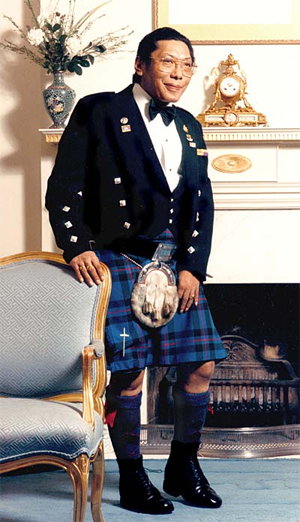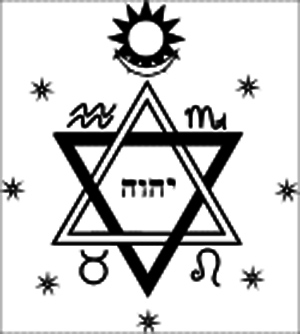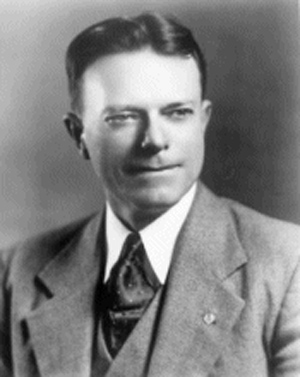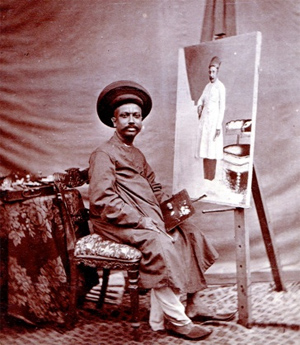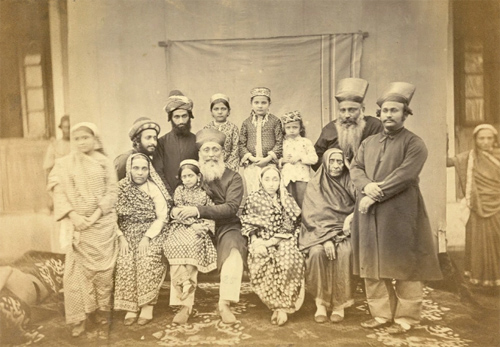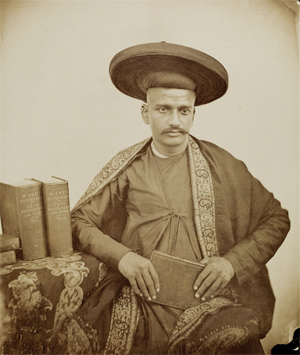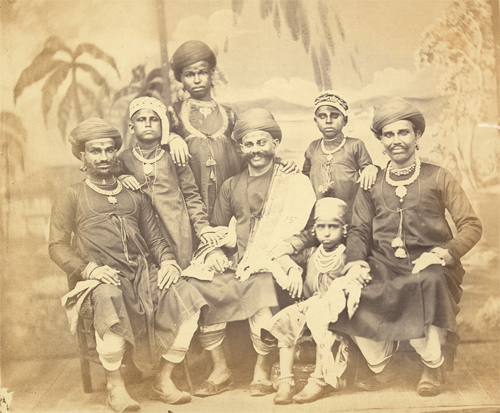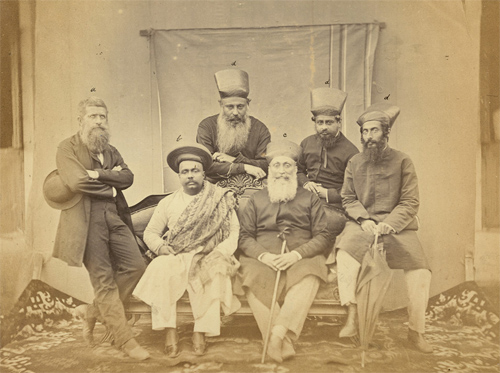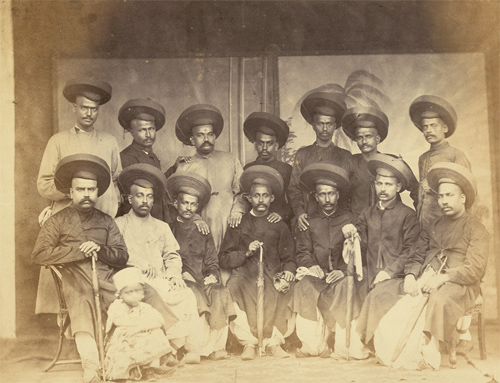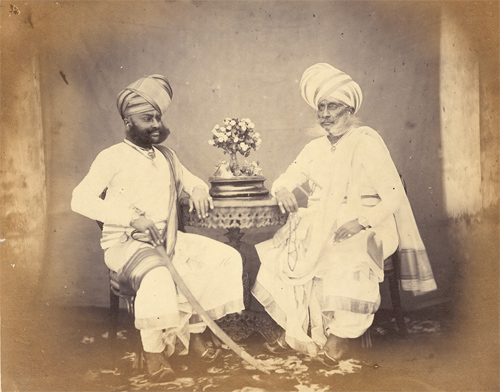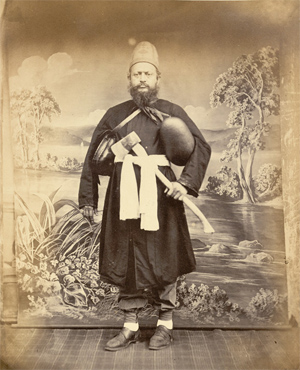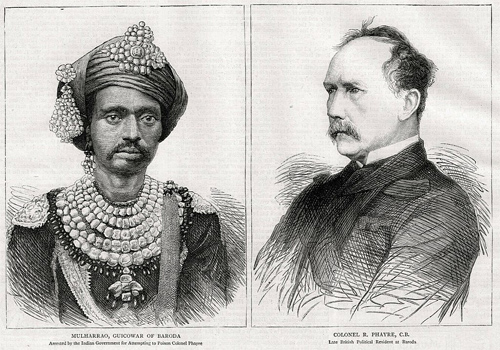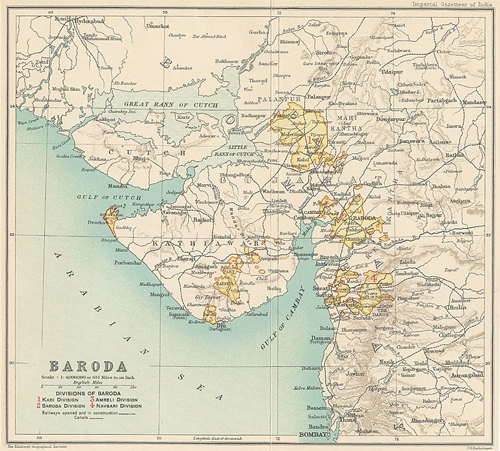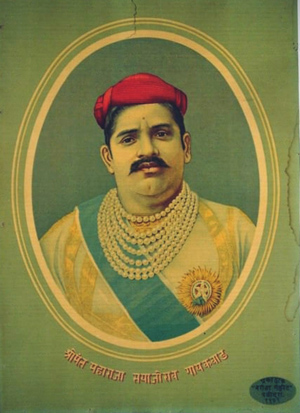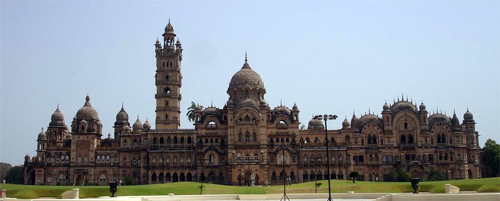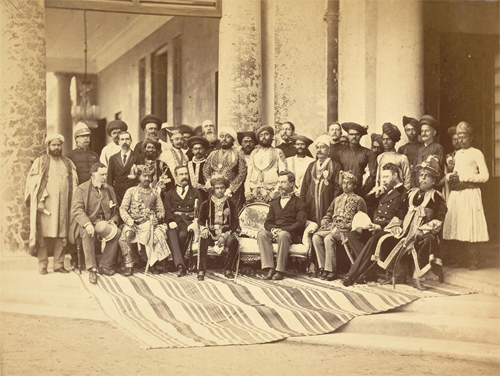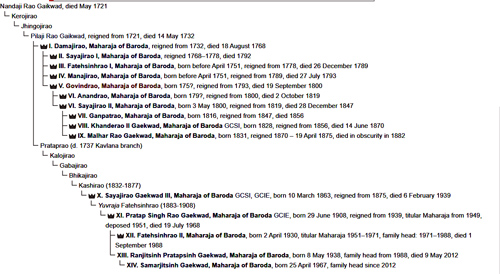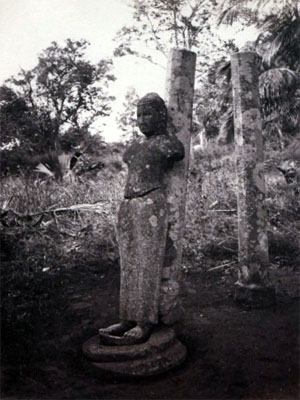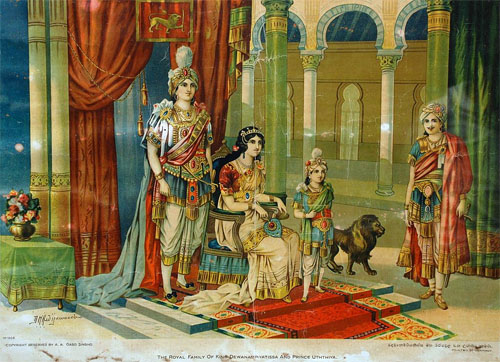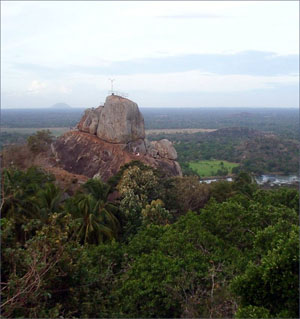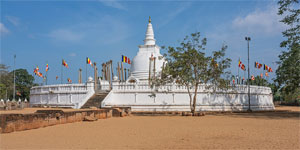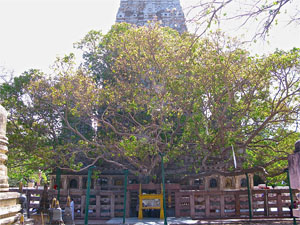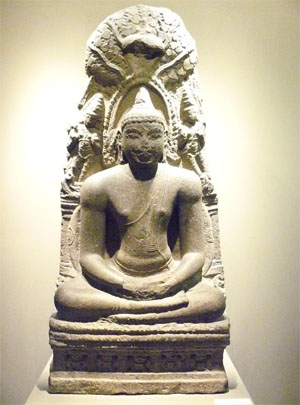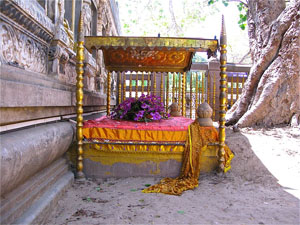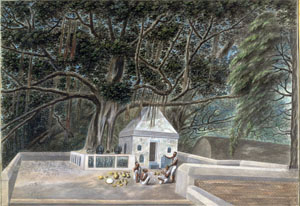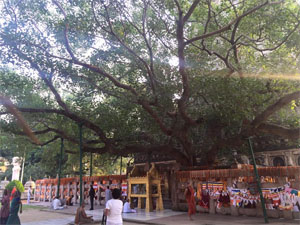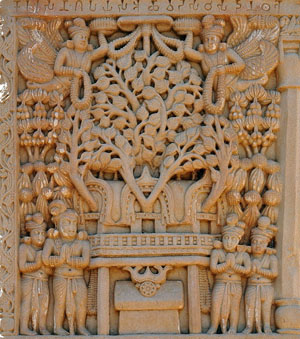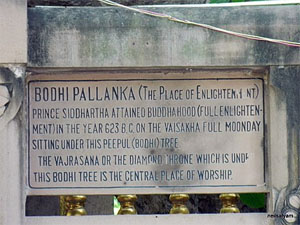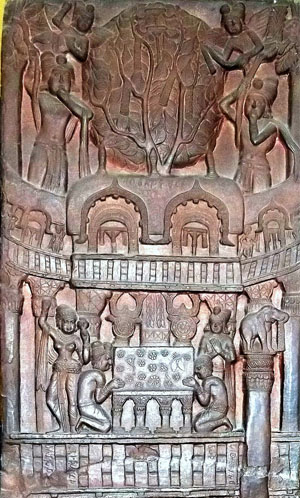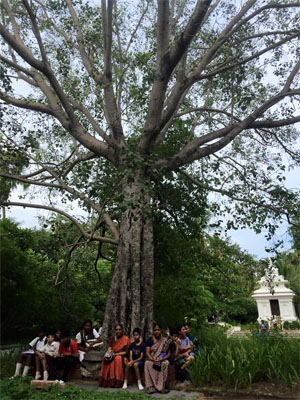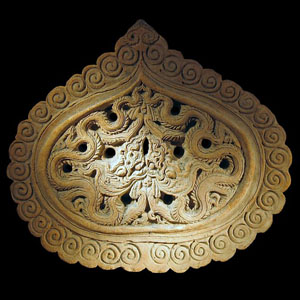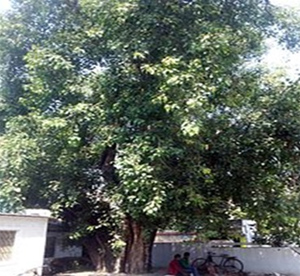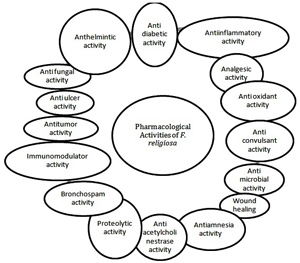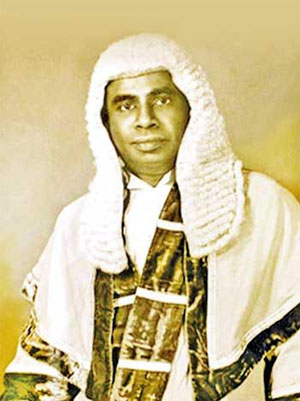Re: Freda Bedi Cont'd (#3)
Part 1 of 2
Prostitution in Ancient India
by Sukumari Bhattacharji
Formerly Professor or Sanskrit, Jadavpur University, Calcutta.
Social Scientist
Vol. 15, No. 2, pp. 32-61 (30 pages)
Feb., 1987
NOTICE: THIS WORK MAY BE PROTECTED BY COPYRIGHT
THE EARLIEST mention of prostitution occurs in the Rgveda, the most ancient literary work of India. At first however we hear of the illicit lover, jara and jatini - male and female lover of a married spouse. What distinguished such an illicit lover from the professional prostitute or her client is the regular payment for favours received. When we merely hear of an illicit lover there may or may not have been an exchange of gift; in a case of mutual consent gifts must have been optional. In the remote days of barter economy when money or currency was yet unknown, such gifts were equivalent to payment in cash. We have oblique references to women being given gifts for their favours, but the contexts leave us guessing whether the woman was a willing partner or whether she agreed to oblige in return for the gifts she received. But clearly, even in the earliest Vedic age, love outside wedlock was a familiar phenomenon and unions promoted by mere lust are mentioned in quite an uninhibited manner.
Prostitution as a profession appears in the literature of a few centuries after the Vedas although it must have been common in society much earlier. After the earliest Vedic literature between the twelfth and the ninth centuries B.C. (i.e., Rgveda, Books II-VII). we have a vast literature which covers the period between the eighth and the fifth centuries B.C. In this literature, too, we hear of the woman of easy virtue, of the wife's illicit love affairs.1
Extra-marital love may have been voluntary and unpaid but there is the possibility of it being regarded by the male partner as a form of service for which he was obliged to pay in some form. But as long as it was confined to a particular person, it was a temporary contract and was not regarded as a profession. The later Pali term muhuttia (lasting for an instant), or its Sanskrit equivalent muhurtika signified such purely temporary unions with no lasting relationship or obligation. Such affairs may have been voluntary or professional, depending on the attitude of the partners.
Gradually, there arose a section of women who, either because they could not find suitable husbands, or because of early widowhood, unsatisfactory married life or other social pressures especially if they had been violated, abducted or forcibly enjoyed and so denied an honourable status in society, or had been given away as gifts in religious or secular events -- such women were frequently forced to take up prostitution as a profession. And when they did so, they found themselves in a unique position: they constituted the only section of women who had to be their own bread winners and guardians. All the others -- maiden daughters, sisters, wives, widows and maidservants -- were wards of men: fathers, brothers, husbands, masters or sons.2 So women who took up prostitution had to be reasonably sure of an independent livelihood; their customers had to make it a viable proposition for them.
Economic Status
It is easy to see that all avenues to prostitution did not offer the same kind of economic security. A raped woman had little chance of an honourable marriage and social rehabilitation; so, reduced to prostitution, she had to accept whatever came her way. This also held true for the old maid turned prostitute. But a young widow or a pretty wanton maid or an unhappily married attractive woman could perhaps choose her partner and name her price, at least in the beginning of her career while she still enjoyed the protection of her father's, husband's or in-laws' home. We have absolutely no way of knowing when prostitution in India arose as a recognizable profession or how much the prostitute received by way of payment. Its emergence and recognition as a profession was presumably concomitant with the institution of strict marriage rules, especially monoandry, and the wife being regarded as the private property of her husband. The terms sadharani or samanya (common), synonyms for prostitute, distinguish her as a woman not possessed by one man; this is the desideratum. When a woman docs not belong to one man but obliges many, as the terms varangana, varastri, varavadhu and varamukhya3 signify, since she is not the responsibility of any one man, she looks after herself. She does by accepting payment from each of the men she obliges; she then This becomes panyastri, one whose favours can be bought with money.
The process of the emergence of prostitution must have been slow, varying from region to region and from age to age. By the later Vedic age, i.e., around the eighth or seventh century B.C., we have references to a more regularized form of prostitution recognized as a social institution. Early Buddhist literature, especially the Jatakas, hear testimony to the existence of different categories of prostitutes, and incidentally provides some information about their fees as also of their financial position.
Professional prostitution presupposes an economic condition in which surplus was produced, a surplus which also earned prosperity from abroad through trade and commerce. It also presupposes the rise of petty principalities, the breakdown of tribal society, the rise of the joint or extended family and the social subjugation of women in general. In a settled agricultural community, the woman gradually lost social mobility and a measure of freedom that she had been enjoying before. She became man's ward, possession, object of enjoyment. Also, with the accumulation of private property, the wife was more zealously guarded and jealously watched over. Society was now polygamous: polyandry disappeared except in some small pockets.
Whether as an unmarried girl, a wife or a widow, she belonged to some man; so otter men could not approach her without trespassing on the owner's property rights. Pleasure outside the home, therefore, had to be paid for, hence prostitution had to he institutionalized so that there was an assurance of a steady supply for ready payment. It must have been a long and tortuous process for women of this profession to congregate in a 'red light area', away from the village -- and later also from towns -- where men could go and seek their company. Social ostracism on the one hand and professional solidarity of the guild type of association on the other, ensured their security and prosperity.
Although the later Vedic literature tacitly assumes and sometimes even overtly mentions prostitutes, it is in the Buddhist texts that we see them first as professionals. In Vedic literature, especially in the Aitareya and Sankhayana Aranyakas, the prostitute is mentioned in an apparently obscene altercation with the neophyte (brahmacarin). In the Vratyasukta of the Atharvaveda, she follows the Magadha. These are clearly part of a fertility ritual. It is in this role that she has persisted in ritual and literature down the ages.
There are various myths and legends regarding the origin of prostitution. The Mahabharata account of the destruction of the Yadavas and Vrsnis4 ends with the women of these tribes being abducted by barbarian brigands. In the Kuru and Pancala regions5 inhabited by the Madras and the Sindhu-Sauviras, the Brahmin sages Dalbhya Caikitayana and Svetaketu's nephew Astavakra were said to be associated with the teaching of erotics in which prostitution constitutes a section. In the Mahabhatata6 and the Matsya purana7 we are given fictitious accounts of the origin of prostitution. Ksemendra says that wicked mothers give their daughters, enjoyed and abandoned by men, to others.8 Vatsyayana in his Kamasutra gives detailed instructions on how a chaste girl should be seduced cleverly until she yields to a man's lust.9 Presumably, when such a man abandoned her she was forced to adopt prostitution as a profession. We also hear of the jayopojivins or jayajivins, husbands who lived on the wife's income which she earned by selling herself. This itself was regarded as a minor sin on the husband's part, an upapataka which could be expiated by taking the comparatively mild candrayana vow.'10 All these texts reveal to us some of the channels by which women came to prostitution. Another old channel of the supply of prostitutes was young virgins given away as gifts on special religious and secular occasions. The number of such girls given away to brahmins, guests, priests, sons-in-law is staggering. In later Vedic times we hear of daksinas, sacrificial fees to officiating priests. Such fees included horses, cattle, gold and also women of various categories -- umarried, married without children and married with children. One wonders what a priest did with hundreds of such women. Some he could marry, others he would enjoy and abandon, still others he would employ as maidservants. Many of these would later find their way to brothels or to slave markets. Yet another source of supply was the royal palace. A king could summon pretty maids to his palace, enjoy them for some days and then send them away. In the Vatsagulma region, ministers' wives had to oblige the king by paying visits (on being summoned) to the palace. In Vidarbha, pretty maids were enjoyed by the king for a month and then sent away. When such women came out of the palace, one obvious solution for their future life was prostitution. Of course, courtiers would sometimes marry some of them but the rest had few alternative courses open to them. Kautilya says that prostitutes were recruited from four sources: either they were born as prostitutes' daughters, or they were purchased,11 or captured in war,12 or they were women who had been punished for adultery.13
Finally, a totally abhorrent manner of procuring women for temple prostitution was buying women and giving them to the temples. Such donors were said to grow rich in this life and live in heaven for a long time. We hear that he who gave a host of prostitutes to the Sun god went to the region of the sun after death.14
Temple dancers do not appear before the last few centuries B.C. and arc mentioned frequently in the early centuries A.D. in some regions. The Jatakas do not know them, Greek visitors after Alexander do not mention them. Even Kautilya does not associate professional dancers with temple prostitution. Evidently, the institution arose in the troubled period of foreign invasion before and after the early centuries A.D. Kalidasa, in the fifth century A.D., assumes their existence and function as an established tradition.15 From the sixth century A.D. onwards, literature and epigraphy hear many evidences of its existence. As townships and cities arose along the trade routes in northern India around the sixth century B.C., internal and maritime trade flourished in these, and towns and cities became centres where courtesans plied their trade and attracted money from travellers, merchants, soldiers and men of various trades. These courtesans were trained in many arts and if they were young and pretty they could amass a fortune, but evidently only the exceptionally beautiful, young and accomplished among them were so fortunate. Since entertainment was their primary function, they had to provide song, dance, music and various other kinds of pleasure; they had to keep a troupe of artistes in the different fields in readiness for the cultivated customer. To the upper class of courtesans sometimes came men of refined aesthetic sensibilities and intellectual ability; hence they were obliged to provide entertainment like the hostesses of the French salons of the last century or the Japanese geisha girls. They themselves were trained in the various arts including literature, for their training was quite lengthy and elaborate. We hear of texts composed for such training; these are called Vaisikatantra. But every courtesan could not herself provide all kinds of aesthetic pleasure, so they had to make an initial and also recurring investment for training and maintaining a troupe of artistes. Occasionally, the royal treasury came to her aid.
Chief courtesans of prosperous cites and towns maintained their own train of singers and dancing girls. Royal courts also patronized such singers and dancers who could be enjoyed by the king and his favourites and who could also be employed as spies.
From the earliest times we have many different names for courtesans. The Rgveda knows the hasra, a frivolous woman and the agru,16 and the sadharani.17 The Atharvavetda knows the pumscali, she who walks among men,18 the mahanagni, she of great nakedness (i.e., who bares herself to many) is mentioned in the atharvaveda,19 Atiskadvari and apaskadvari, women with fancy dress and bare bosoms are mentioned in the Taittiriya Brahmana.20 Rajayitri, she who entertains and is given to sensuality, also figures in some texts.21 Samanya and sadharani are generic terms for the common woman.22 In the Mahavrata rite the pumscali, a prostitute pairs ritually with a brahmacarin.23 The Kamosutra in the second or first century B.C. mentions the kumbhadasi and paricarika maidservants who could also be enjoyed at will. Kulata and svairini, wanton women, nati, the actress, silpakarika, she who is engaged in arts and crafts, prakasavinasta, the openly defiled one, rupajiva and ganika, are courtesans with different social ranks.
The Jatakas mentionvannadasi, vesi, nariyo, gamaniyo, and nagarasobhani itthi; 24 muhuttia25 and janapadakalyani are mentioned in several Buddhist texts in the sense of the most beautiful women who can be enjoyed by an entire janapoda. The ganika must initially have connoted a woman at the disposal of all the members of a gana, a tribe, and later of the political unit, or constituent of a confederacy. Some later names includes salabhanjika, who is no other than a prostitute in Jatadhara's dictionary.
Variations in Status and Functions
This profusion of synonyms cannot be explained by regional or temporal variations only, it also signifies the social and financial status of the various categories of courtesans.26 The numerous synonyms also testify to the widespread presence of the institution through the ages.
The rupajiva was not accomplished in the arts like the ganika; her only stock in trade as the name signifies was her beauty and charm. She owed the state two days' income for a month. If a man forcibly enjoyed her he was fined 12 panas, but in times of crisis half her monthly income could be forfeited to the state.27 She could also belong to the royal harem28 and could also be exclusively kept by one man; in which case another enjoying her was fined 48 panas.29 Disguised as a wife she could help a man escape and could also be employed by the state as a spy.30 Vatsyayana also mentions the rupajiva.31 Another name of the mistress of one individual man is avaruddha. The rupadasi was unaccomplished and was employed in the personal attendance of a wealthy man. Like the vannadasi mentioned in the Jatakas she could entertain customers on her own or serve under some other person.32 The ganikadasi was a female slave of the ganika who could also become independent and set up her own establishment. The Samajataka mentions Sama, a courtesan of Kasi who had a retinue of 500 ganikadasis.33 Other common and late names are varangana, varabadhu, varamukhya, all of which stand for a prostitute while vrsli, which originally meant a Sudra woman later came to mean a harlot; pumsula and lanjika are later synonyms of harlots. Kulata was a married woman who left home to become a public woman and vandhaki was a housewife turned whore; her husband was known as vandhakiposa, maintaining or being maintained by a vandhaki. A vandhaki too had to pay part of her income to the state coffers in times of national crisis. The randa was a low common woman, a mistress to vita, usually an old hag who pretended to he engaged in penance but was actually out to catch customers.
The ganika and sometimes the rupajiva too, received free training in the various arts and
In a sixth century Jain work we have an exhaustive list of the prostitute's attainments -- writing, arithmetic, the arts, singing, playing on musical instruments, drums, chess, dice, eightboard chess, instant verse-making, Prakrite and Apabhramsa poetry, proficiency in the science of perfume making, jewellery, dressing up, knowledge of the signs of good or bad men and women, horses, elephants, cooks, rams, umbrellas, rods, swords, jewels, gems which antidote poison, architecture, camps and canopies, phalanx arrangement, fighting, fencing, shooting arrows, ability to interpret omens, etc. Altogether seventy-two arts and sciences were to be mastered by her.35
It is clear (hat the prostitute especially the ganika, the most accomplished among them, offered men something which by the early centuries A.D. had become absolutely rare among the women of the gentry, viz, accomplishment. We read in the Manusamhita: "The sacrament of marriage is to a female what initiation with the sacred thread is to a male. Serving the husband is for the wife what residence in the preceptor's house is to the man and household duty is to the woman, what offering sacrifices is to the man."36 This series of neat equations deprive the woman of education, dooming her to household chores only, especially service of her husband and in-laws, but also thereby indirectly doom her to the loss of her husband's attention. With an unaccomplished wife at home, the man who cared for cultured female company went to the brothel for it. Manu belongs to the early centuries A.D.;37 a steady deterioration in the status of the woman and the Sudra followed his codification of the social norm and the brothel flourished because it catered to the cultured man-about-the-town's (nagaraka) tastes in women.
The ganika because of her youth, beauty, training and accomplishment belonged to a superior social status. With an extensive, elaborate, and apparently expensive education she could frequently name her price, which, as Buddhist texts testify was often prohibitive. She was patronized by the king who visited her sometimes, as also by wealthy merchants. Because of her high fees none but the most wealthy could approach her. She alone enjoyed a position where as long as her youth and beauty lasted she could not be exploited.
Taxes to the State
We have seen that the ganika, rupajiva, vesya and vandhaki had to pay taxes to the state but a careful study leads to the conclusion that almost all categories had an actual or potential obligation for paying taxes; the collection, however, depended on the degree and nature of the organization. Organized red light areas paid taxes regularly, at a fixed rate, while it was much more difficult to ascertain the income of the women 'kept' in seclusion by a man or of the unorganized individual women plying the trade in isolated pockets or even, like the vandhaki, at home. Similarly, organized brothels enjoyed greater security from the state in lieu of the taxes they paid while individuals who paid 'hush-money' to extortionist officers could hardly demand any protection from injustice, manhandling, coercion and cheating. The Nammayasundarikatha, a twelfth century text says that the state received 25% to 30% of the prostitute's income.
We hear of the extremely high fees of some famous ganikas in the Buddhist texts. Bhatti38 and parivvayam39 denote two different types of fees. Vasadavatta of Mathura charged very high rates per night.40 Salavati of Rajagraha charged a hundred karsapanas per night while Ambapali's fees led to a dispute between the cities Rajagrha and Vaisali. A Jain text41 says that a courtesan who had a faultless body and whose attainments were complete may charge 1000 karsapanas per night. Evidently, only the richest merchants could pay such fees. The play Mrcchakatika mentions a thousand gold coins and ornaments being sent in advance to lure a ganika to a paramour's house. The ganika, says Kautilya, was also paid a monthly salary from the royal treasury and the pratiganika, her short-time substitute, received half the amount. The ganika, however, did not enjoy property rights. "There is every likelihood that their palatial establishments and gardens were state property with life interest."42 On her death, her daughter inherited her property but only for use; she could not sell, mortgage, exchange or donate them. This, of course, is true of the ordinary prostitute living in an organized brothel; many outstanding ganikas were mistresses of their own property. Hence in Buddhist literature we have many instances where she gave away her property. A ganika could be bought out by a sympathetic customer; her redemption money (niskraya) was 24,000 panas, a very high sum in view of the fact that her annual salary paid by the state was between 1000 and 3000 panas. A rupajiva's fees were 48 panas, she usually lived with actors, wine-sellers, meat-sellers, people who sold cooked rice and Vaisyas generally. It is obvious that she kept company with people who controlled ready cash.
A man who forcibly attacked a ganika's daughter paid a fine of 54 panas plus a fine (sulka) of sixteen times her mother's fees, presumably to the mother herself.42 The second fine may also be a hush-money paid to the bridegroom at the daughter's wedding. Foreign customers had to pay 5 panas extra tariff duty to the state apart from the courtesan's regular fees. The pumscali (a common whore) did not have any fixed fees; she could only demand fees on marks of cohabitation, if she tried to extort money from her customers her fees were liable to be forfeited to the state -- also if she threw temper tantrums or refused to oblige the customer in any way. The Kuttanimmata says that the temple prostitute (tridasalayajivika) got paid by the temple authorities and that her income was fixed by tradition. Ksemendra's Samayamatrka says that they were paid in grain as remuneration and that they were employed in rotation.
If after receiving her fees a prostitute refused to oblige her customer she paid a fine of double her fees; if she refused him before accepting the fees she paid her fees as fine.44 Apparently it is a fair business deal where the defaulter pays a fine but if we pause and think that a sensible person would not ruin the prospects of gain or income unless she had some serious reason for disobliging her customer, it becomes clear that she did not have the option of refusing to sell herself. In other words, society refused to look upon her as a human being; she was just a commodity, nothing more. If a price had been accepted the commodity was the customer for use.
Regarding her customers Vatsyayana is very clear. The ideal one is young, rich, without having to earn his wealth (i.e., born to wealth), proud, a minister to the king, one who can afford to disregard his elders' commands, preferably an only son of a rich father. Born in an aristocratic family, be should be learned, a poet, proficient in tales, an orator, accomplished in the various arts, not malicious, lively, given to drinks, friendly, a ladies' man but not under their power, independent, not cruel, not jealous, not apprehensive.45 The courtesan is advised not to stick to one visitor when she has offers from many. She should go to the person who can offer the gifts she covets.46 Since money can buy everything she should oblige him who can afford the highest sum -- this, says the text, is what the teachers' instruct. When she wants to bring her paramour back from a rival she should be extra nice to him and be satisfied with less payment temporarily. This is to ensure her future ... she should leave the impoverished lover and never invest in one from whom there is no hope of return.47 She should be able to read the signs of his disaffection; a long list of such signs are given.48 Above all, a courtesan should never encourage or entertain a suitor of reduced means. When she has squeezed her customer dry she should remorselessly leave him and search for a rich one. Normally, a ganika chose her own customer except when the king forced one on her. Then, if she refused she was whipped with 1000 lashes or was fined 5000 panas. She did not have any right over her own body where the royal wish was concerned.49 The punishment for forcing an unwilling ganika was 1000 panas or more. Once she admits a client into her own house to share it with her she could not throw him out. If she did, the fine was eight times her fees. She could only refuse if he was diseased. When the client cheated her of her fees he had to pay eight times the fees.
The prostitute could own ornaments, money, her fees, servants, maidservants who could be concubines. But other texts indicate that this ownership was not real or ultimate; but merely a right of use. The concubine, however, was obliged to pay the mistress for her own upkeep, plus one pana per month.
Prostitution in ancient India existed both overtly and covertly. In other words, besides brothels or open establishments run by and for one or more prostitutes, ancient texts give a list or many professions for girls where she could potentially be enjoyed by her employer with impunity. She could act as a substitute for the wife. In the Jain text Vasudeva Hindi we read of Bharata, a leader of his clan having another woman besides the wife. All the feudatories under him sent their daughters who arrived at the same time. The queen threatened to leave, so it was decided that they would serve him in the outer court and that later they would be handed over to the gana, the tribe, to become ganikas, the text thus explains the origin of the term ganika. The Mahabharata tells us that the Pandava, army was followed by a host of prostitutes who went in the rear of the army on baggage carts.50 Yudbisthira on the eve of the war sent his greetings to the prostitutes.51 In the train of the Pandavas when they left for the forest there were "chariots, traders' goods and brothels", presumably to entertain the army.52 King Virata after his victory ordered young girls to dress well, come out53 and entertain the assembled men. Such a command could only be given to public women. When Krsna went on a peace mission to the Kauravas, Duryodbana's entertaiment of the former included a rest house with women; Dhrtarastra ordered fair harlots to go with his sons to meet Krsna. The later didactic interpolations of the Mahabharata, however, are full of imprecations and stigma against prostitutes.54 The Ramayana mentions ganikas and vesyas in the list of comforts, luxuries and status symbols. It is quite clear that prostitutes became a symbol of the prosperity concomitant with urban civilization. Like gold and jewellery, like corn and cattle, a rich man desired prosperity and plenty in the number of women he could enjoy freely.
Women as Commodity
The concept of women as chattel or commodity for man's enjoyment is borne out by the inclusion of women -- pretty and young -- in large numbers in any list of gifts given to a man in return for a favour or as a mark of respect. Thus she is a part of daksina, fees to a sacrificial priest. At Yudhisthira's horse-sacrifice women were sent by other kings as a donation to make up a necessary part of the entertainment.55 Yudhisthira himself gives away pretty maids to guest kings;56 he is even laid to have given away hundreds of thousands of pretty girls as did King Sasabindu of old at his horse sacrifice.57 Pretty maids as part of daksina are also mentioned when King Bbagiratha gave hundreds of thousands of lovely maids, well decked out with gold ornaments.58 Even at a sradha ceremony Brahmins received thousands of pretty maidens as gifts.59 These girls could sometimes find husbands but presumably, since prostitution was being looked down upon more and more and maidenhood became an essential prerequisite for marriage in the Smrti texts, most of them were forced to become prostitutes.
In heaven heroes are rewarded with a large number of beautiful girls.60 The same idea is also seen in classical Sanskrit literature. In the Kumarasambhava, 61, Raghuvamsa,62 Kiratarjuniya,63 and in Sisupalavadha,64 in Subandbu and Bana we have references to courtesans as a prestigious decoration of a royal palace and an indispensable part of city life. Bhaguri calls her puramandana, an ornament of the city. Thus her status was that of an inanimate object of enjoyment, it was sub-human and subject.
Courtesans sometimes did perform several other functions. In the Mahabharata they participated in the victory celebrations.65 They even played a political role as spies whose duty it was to seduce important men who were potential sources of vital political information, to collect such information and supply it to the relevant officers through the superintendent (ganikadhyaksa). Their role as temptress is emphasized in the Vattaka Jataka. The names of various types of courtesans gives us an inkling of their roles. Thus the devavesya was the temple dancer, something like the Greek hierodoules; the vajavesya served the king; while the brahmavesya or tirthaga visited holy places or pilgrimages. In the Brahmapurana we have the description of Ekamratirtha, where lived many prostitutes66 presumably to cater to the pilgrims and visitors. In the samaja public functions there used to be a separate gallery where sat the courtesans who gave musical performance for the samaja. Kautilya assigns them the duties of common maidservants at the palace. We hear of a prostitute serving Dhrtarastra when Gandhari was pregnant.67 Uddyotana Suri in his Kuvalayamala describes nymphs in Indra's heaven who carried water vessels, fans, fly-whisks, parasols, mirrors, kettledrums, harps, ordinary drums, clothes and ornaments, In the Ramayana and the Mahabharata such women followed the king in the palace and served him in his train. The Latitavistara mentions women who carried full pitchers, garlands, jewellery and ornaments, the throne, the fan, jars full of perfumed water, etc, Evidently in all these instances, as also in many references in the Puranas and later literature the pretty damsels giving light personal service to the king are projected to heaven where the earthly prostitutes figure as celestial nymphs serving the gods. Whether on earth or in heaven monarchs or wealthy potentates used such women to enhance their glory and pleasure.
The retired temple prostitute was employed by the state for spinning cotton, wool and flax. The nagaraka, man-about-the-town, in his love-intrigues could have assistance from widows, Buddhist nuns, and old courtesans who acted as go-betweens. In the palace the courtesan held positions as the royal umbrella-bearer, masseuse in charge of the king's (also of the royal family) toilet, dress and ornaments, and as the king's bathroom attendant. They also had a place in the royal entourage in hunting and military expeditions, and on occasion entertained royal guests. What is true of her function with regard to the king is also true of the rich courtier merchant and nobles described as nagaraka in the Kamasutra. In the non-monarchical gana states the chiefs gambled and indulged themselves in the company of prostitutes. The keepers of brothels procured pretty women from their establishment for these chiefs' entertainment. These aged women, the brothel-keepers, were adept in bringing about and resolving quarrels between rival suitors as and when needed by them or by political agents of the state. Courtesans belonged to kings or wealthy citizens' trains in their amusements and festivals, their garden parties, boat trips, musical soirees, and bathing and drinking sprees. The Kamasutra describes the different sports and festivals of rich barons to each of which courtesans were invited.
The text goes on to name twenty different sports and festivals which depended on the seasons, the moon and auspicious days of the year. "Villagers should learn of these sports of the townsmen, describe and imitate them."70
No doubt the prostitutes occasionally enjoyed themselves at such times, but whether they spied, massaged, bathed, dressed or carried the umbrella we do not hear of any extra payment for these additional duties to which they were certainly entitled because their main task as prostitutes only earned them a place in the king's or rich man's establishment. In a sense in the organized brothel prostitutes were better off, because normally they were not expected to do other chores although when with their customers, they sometimes entertained them with minor services. It all depended on the social and economic status of the prostitute. The city's chief courtesan was a wealthy person of a high rank who had a host of servants and maidservants for the menial chores; she herself was too accomplished, rich and respectable to do the chores herself; whereas a poor and common strumpet had to cater to many customers, also indigent and therefore, each able to pay very little. Hence she had to do all the menial chores for herself and her customer for bare subsistence.71 The avaruddha, a woman 'kept' by a man, enjoyed freedom from manual labour only if her patron was rich; otherwise she had to work for herself and for him. Hers was like a 'contract marriage' and, as in marriage, the status of the woman depended on the man's income.
Social Status
At this distance of time it is difficult to form an adequate idea of the social status of prostitutes. We have seen that not all prostitutes belong to the same category. The accomplished young beauty could name her price, sometimes at an apparently exorbitant rate, because she was in great demand. Speaking of the ranks of royal attendants the Kurudhamma Jataka says that the lowest of the courtiers was the door-keeper, the dvarlka; he occupies the lowest place but one, for he is above the public woman, the ganika. Every city had a chief courtesan who was 'an ornament to the city'.72 The janapadakalyani or the sadharani of the non-monarchichal state of the Licehavis were in great demand and were often looked up to because of their beauty and culture and so could ask any price for their favours. And they got it as many Buddhist texts testify. The word janapadakalyanl literally meant the most beautiful woman In a country. The Digha Nlkaya,73 the Majjhima Nikaya,74 and the Samyutta Nlkaya75 refer to her, Buddhist texts mention many affluent and powerful courtesans who fed the Buddha and his train and gave gifts to the order. We thus hear of Ambapali giving such a feast to the Lord and his hundred thousand followers. She also gave away her big mango grove to the order.76 Salavati's daughter Sirima received 1000 kahapanas per night.77 We hear of a banker's daughter who chose to become a prostitute. Her father set too high a price; few customers came; she reduced it to half and was called ardhakasi.78
As looks, age and accomplishments came down the price and social prestige also came down so that middle aged, unaccomplished or plain-looking women had to agree to mere subsistence rates or even less. Even that they did not always get, as many texts on erotics tell us. The Kuttanimata, a major text on prostitution, describes the plight of such discarded prostitutes who were reduced to begging, stealing, and various other tricks. They had no guarantee of the next meal or shelter, no provision against old age, disease and penury. The heart-rending description of an abandoned, unattractive prostitute who takes recourse to becoming a confidence trickster and is pursued by society is occasionally rendered ludicrous by the very comicality of her various moves and the invariable failure of each move. But beyond this comic portrait is the tragic situation of a woman who, after having provided pleasure to many men's lust all through her life, has to fend for herself at a time when she is worst equipped for such a lone battle. In many texts we hear of such retired harlots begging.79 The classic example is Kankali, an inn-keeper's daughter, sold at seven as a slave in the market place, who started as an ordinary prostitute and in time lost her youth and whatever charm she had earlier had. So she tried her hand at different professions but since she had no training in any she could not earn a livelihood through them. Then she tried to seduce people at pilgrimages, dressing up and disguising her age and loss of looks, but was eventually caught and summarily dropped. She changed roles frequently, was even imprisoned; in a bid to escape she murdered the warder. She then fled to a monastery where she could not stick it for very long. Later she begged openly until there was a famine and she could not get alms. So she became a nurse to a child whose gold chain she stole one night and escaped. When that money was exhausted she took to selling loaded dice. Then she returned to begging as a profession. But the strain and poor returns prompted her to steal food offered to idols. She next became a wine-seller, a fortune-teller and an actress in turn and finally she went about pretending to be insane. For a time she enjoyed royal hospitality because she gave out that she could paralyse a hostile army. But quite naturally she had to take to her heels before the actual encounter took place. Finally she returned to her native place and became a procuress for a pretty young prostitute, Kalavati.80 This tale, evidently a concatenation of many disparate episodes, epitomizes the fate of old prostitutes. Their tragedy was not only the lack of social security but also their lack of proficiency in any alternative profession through which they could earn a livelihood. Besides, having known better days they could not stick to any mean profession which did not provide comfort. Hence they flitted from one profession to another with cunning and the ability to cheat through play-acting -- arts they had mastered as prostitutes- -- s the only stock-in-trade. In the Desopadesa we hear of a sixty-year old woman making herself up as a young girl in the hope of catching a customer.81
Institutionalized prostitution, however, offered somewhat better prospects for old and retired courtesans. Kautilya lays down the rule that ganikas, pratiganikas, (short term substitutes for the ganikas), rupajivas, vesyas, dasis, devadasis, pumscalis, silpakarikas, kausikastri (woman artisan) are to be given pension by the state in old age. Since Kautilya was written for a prince it is to be assumed that these women were employed by the state and had earlier paid taxes to the state which the state regarded partially as provident fund contribution against old age, disability, retirement and penury. We are not told what the pension was in terms of money, whether it was adequate for sustenance. But a steady income, however small, must have meant some measure of security to elderly women who would otherwise be wholly destitute. But since women and their labour was exploited in most spheres of life, we may assume that this rule was not strictly observed, because such women were totally powerless to sue the state for non-payment. Yet the few who actually received some pension were lucky to have it. Retired prostitutes were employed as cooks, store-keepers, cotton-wool and flax spinners, and in various other manual jobs, so the state did not have to pay the pension until they were too old and weak to work any more. In old age some prostitutes became matrkas, i.e., matrons-in-charge of a brothel.
We hear of prostitutes' anvaya, family: their mothers, sisters, daughters and sons. The mother looked after her personal possessions, like dress and ornaments; she could not deposit her ornaments anywhere else; the daughter inherited them on her mother's retirement or death. But only for use. The sister could act as her substitute in a commission and the son was trained as a musical artist or an actor, He became a property of the state, almost a slave, and was obliged to hold musical performances for the stage for eight years. The manumission fees for him was higher than that for the prostitute. But in the play Mrcchakatika we hear of bandhulas "who are begotten by unknown clients of the prostitutes." Without any social identity these boys lived in a brothel until they could eke out a livelihood for themselves. The pathetic tone of the verse tells us how these boys were looked upon as waste products, like slag in a factory.
A prostitute was obliged to keep the brothel superintendent posted about her income and expenses and he could stop her from being extravagant. She could not sell or mortgage her property al will; for doing so she paid a fine, fifty and a quarter panas.
Occasionally a prostitute was married. Vatsyayana lays down a provision whereby a vesya could be given in marriage to one who could provide special musical assistance to the establishment; such a marriage leads to greater prosperity.82 Otherwise we hear of a notional sort of marriage which was more in the nature of initiation. The man did not have any exclusive claim on her person or services. The avaruddha belonged to her patron exclusively and the law-givers say that his exclusive right to her should be respected.83 Narada has no objection to a man having sexual relations with a non-Brahmin svairini, vesya, dasi and nikasini (one who did not live a secluded life) of a lower caste if she was not another's wife.
That even a prostitute can fall in love is admitted theoretically by Vatsyayana even though he says that they are and should always be after money.84 A prostitute, according to the Skandapurana, belongs to a separate caste: if a man of the same or a superior caste enjoys her he is not to be punished, provided she is not another's concubine. If she is, then he simply performs the prajapatya (a light) penance85 and gets away with it. In literature we have a few instances of the prostitute falling in love."
Prostitution in Ancient India
by Sukumari Bhattacharji
Formerly Professor or Sanskrit, Jadavpur University, Calcutta.
Social Scientist
Vol. 15, No. 2, pp. 32-61 (30 pages)
Feb., 1987
NOTICE: THIS WORK MAY BE PROTECTED BY COPYRIGHT
YOU ARE REQUIRED TO READ THE COPYRIGHT NOTICE AT THIS LINK BEFORE YOU READ THE FOLLOWING WORK, THAT IS AVAILABLE SOLELY FOR PRIVATE STUDY, SCHOLARSHIP OR RESEARCH PURSUANT TO 17 U.S.C. SECTION 107 AND 108. IN THE EVENT THAT THE LIBRARY DETERMINES THAT UNLAWFUL COPYING OF THIS WORK HAS OCCURRED, THE LIBRARY HAS THE RIGHT TO BLOCK THE I.P. ADDRESS AT WHICH THE UNLAWFUL COPYING APPEARED TO HAVE OCCURRED. THANK YOU FOR RESPECTING THE RIGHTS OF COPYRIGHT OWNERS.
Many States, even among the Moderns, have found the Necessity as well as Utility of tolerated Prostitution; they have discovered it to be one of the most effectual Methods for preserving the Peace of Families and the Health of Individuals; and Publick Stews have accordingly been licensed under every Regulation that could be devised to obviate their probable ill Effects, and to secure all their Advantages; so, in Asia, the Profession of Singing and Dancing by distinct Sets or Companies naturally formed these Women into a Kind of Community. And as the Policy of a good Government will always look with an Eye of Regard upon every Branch of Society, it was but just and proper to enact Laws for the Security and Protection of this Publick Body, as well as of the rest of the State, particularly as the Sex and Employment of those who composed it rendered them more than usually liable to Insult and ill Usage.
-- A Code of Gentoo Laws, Or, Ordinations of the Pundits, From a Persian Translation, Made From the Original, Written in the Shanscrit Language, by Nathaniel Brassey Halhed
The culture of the performing art of nautch, an alluring style of popular dance, rose to prominence during the later period of Mughal Empire and the British East India Company Rule. During the period of Company rule in India by the British East India Company in the late 18th and early 19th centuries and during the subsequent British Raj, the British military established and maintained brothels for its troops across India. Women and girls were recruited from poor rural Indian families and paid directly by the military. The red-light districts of cities such as Mumbai developed at this time. The governments of many Indian princely states had regulated prostitution in India prior to the 1860s. The British Raj enacted the Cantonment Act of 1864 to regulate Prostitution in colonial India as a matter of accepting a necessary evil. The Cantonment Acts regulated and structured prostitution in the British military bases which provided for about twelve to fifteen Indian women kept in brothels called chaklas for each regiment of thousand British soldiers. They were licensed by military officials and were allowed to consort with soldiers only. In the 19th and early 20th centuries, thousands of women and girls from continental Europe and Japan were trafficked into British India, where they worked as prostitutes servicing British soldiers and local Indian men.
-- Prostitution in India, by Wikipedia
Highlights:
The rupajiva was not accomplished in the arts like the ganika; her only stock in trade as the name signifies was her beauty and charm. She owed the state two days' income for a month. If a man forcibly enjoyed her he was fined 12 panas, but in times of crisis half her monthly income could be forfeited to the state...A vandhaki too had to pay part of her income to the state coffers in times of national crisis...
We have seen that the ganika, rupajiva, vesya and vandhaki had to pay taxes to the state but a careful study leads to the conclusion that almost all categories had an actual or potential obligation for paying taxes; the collection, however, depended on the degree and nature of the organization. Organized red light areas paid taxes regularly, at a fixed rate, while it was much more difficult to ascertain the income of the women 'kept' in seclusion by a man or of the unorganized individual women plying the trade in isolated pockets or even, like the vandhaki, at home. Similarly, organized brothels enjoyed greater security from the state in lieu of the taxes they paid while individuals who paid 'hush-money' to extortionist officers could hardly demand any protection from injustice, manhandling, coercion and cheating. The Nammayasundarikatha, a twelfth century text says that the state received 25% to 30% of the prostitute's income...
The ganika, says Kautilya, was also paid a monthly salary from the royal treasury and the pratiganika, her short-time substitute, received half the amount. The ganika, however, did not enjoy property rights. "There is every likelihood that their palatial establishments and gardens were state property with life interest." On her death, her daughter inherited her property but only for use; she could not sell, mortgage, exchange or donate them. This, of course, is true of the ordinary prostitute living in an organized brothel; many outstanding ganikas were mistresses of their own property...A ganika could be bought out by a sympathetic customer; her redemption money (niskraya) was 24,000 panas, a very high sum in view of the fact that her annual salary paid by the state was between 1000 and 3000 panas...
Foreign customers had to pay 5 panas extra tariff duty to the state apart from the courtesan's regular fees. The pumscali (a common whore) did not have any fixed fees; she could only demand fees on marks of cohabitation, if she tried to extort money from her customers her fees were liable to be forfeited to the state -- also if she threw temper tantrums or refused to oblige the customer in any way. The Kuttanimmata says that the temple prostitute (tridasalayajivika) got paid by the temple authorities and that her income was fixed by tradition. Ksemendra's Samayamatrka says that they were paid in grain as remuneration and that they were employed in rotation.
If after receiving her fees a prostitute refused to oblige her customer she paid a fine of double her fees; if she refused him before accepting the fees she paid her fees as fine...
Courtesans sometimes did perform several other functions. In the Mahabharata they participated in the victory celebrations.65 They even played a political role as spies whose duty it was to seduce important men who were potential sources of vital political information, to collect such information and supply it to the relevant officers through the superintendent (ganikadhyaksa)...
The retired temple prostitute was employed by the state for spinning cotton, wool and flax...The keepers of brothels...were adept in bringing about and resolving quarrels between rival suitors as and when needed by them or by political agents of the state...
Institutionalized prostitution, however, offered somewhat better prospects for old and retired courtesans. Kautilya lays down the rule that ganikas, pratiganikas, (short term substitutes for the ganikas), rupajivas, vesyas, dasis, devadasis, pumscalis, silpakarikas, kausikastri (woman artisan) are to be given pension by the state in old age. Since Kautilya was written for a prince it is to be assumed that these women were employed by the state and had earlier paid taxes to the state which the state regarded partially as provident fund contribution against old age, disability, retirement and penury. We are not told what the pension was in terms of money, whether it was adequate for sustenance. But a steady income, however small, must have meant some measure of security to elderly women who would otherwise be wholly destitute. But since women and their labour was exploited in most spheres of life, we may assume that this rule was not strictly observed, because such women were totally powerless to sue the state for non-payment. Yet the few who actually received some pension were lucky to have it. Retired prostitutes were employed as cooks, store-keepers, cotton-wool and flax spinners, and in various other manual jobs, so the state did not have to pay the pension until they were too old and weak to work any more. In old age some prostitutes became matrkas, i.e., matrons-in-charge of a brothel...
We have just seen that their clients also maltreated and manhandled them and these were not isolated incidents or exceptions or there would be no need to frame laws against crimes and stipulate the exact amount of fines for the several kinds of assault. She was often used and then cheated, robbed, thrashed, mutilated and murdered. If the institution was for society a necessary evil and the state had a vested interest in extracting revenue and espionage service from this 'evil', then it could not afford to ignore a situation when the source of such revenue was harmed so that she could not multiply the revenue. Hence the laws. But the attitude of society was clearly against the prostitute and not against her client...
What was the prostitute's social status? Strangely enough, prostitution is recognized as a profession with laws to regulate it because it served its specific purpose by catering to men's needs of extramarital sexual gratification and also the state's needs by bringing in considerable revenues and secret political information through espionage. As townships sprang up along trade routes and as rich men long away from home frequented these brothels these became a regular feature with the chief courtesans, beauty queens, being regarded as ornaments of the town or city, magarasobhani or nagaramandana. Because she was in high demand and because she would fetch a rich revenue if she was accomplished and attractive, the state undertook to supervise her education (with quite a heavy and rigorous syllabus) at its own expense, provided she remitted part of her income to the state...
Kautilya says that the superintendent of prostitutes conferred the title of ganika to the pretty, young and cultured hetaira;101 she drew 1000 panas from the state presumably for her establishment, and her teachers in the various arts were also paid by the state. She had a measure of social security in the sense that those who harmed her physically, financially and socially were liable to be punished heavily by the state. Needless to say that such a coveted position was not accorded to many; only a handful of the prostitutes were made ganikas whose favours were enjoyed by kings, princes and the richest of the merchants...The devadasis were a class by themselves who, because they were attached to institutions (i.e., temples) governed directly or indirectly by the state, enjoyed some degree of protection.
It is common knowledge that in most centres of ancient urban civilization temple prostitution was a common feature. Whether in ancient Greece, Rome, Egypt, Babylon in temples of Badl and Astarte, or in Chaldea, Phoenicia or India and in the Far East it flourished under the dual patronage of the state and the church. Temple priests frequently got paid from the royal treasury, the temple prostitute was an extra allowance to them...
Once inside the temple and under the thumb of the priests they became like slaves with no clear definition of their rights and duties...
What happened to the devadasi when she grew old? Presumably not all of them enjoyed royal patronage. Those who did were employed in the state textile factory as we find in the solitary mention of the devadasi in Kautilya.105 Dancing was the only art she had learned and she could not practice it in old age, so that if she was one of those who did not enjoy royal care she would be reduced to destitution. Her profession prevented her from having a family and her long stay in the temple isolated her from society; therefore, even if she worked in a textile factory for a time she would face penury in real old age when both the temple and the community cut her off as wholly redundant. Thus at the end of a long career of double exploitation -- as a temple dancer and as the priests' concubine -- she faced complete destitution, for neither the state nor the temple had any obligation to look after her.
-- Prostitution in Ancient India, by Sukumari Bhattacharji
THE EARLIEST mention of prostitution occurs in the Rgveda, the most ancient literary work of India. At first however we hear of the illicit lover, jara and jatini - male and female lover of a married spouse. What distinguished such an illicit lover from the professional prostitute or her client is the regular payment for favours received. When we merely hear of an illicit lover there may or may not have been an exchange of gift; in a case of mutual consent gifts must have been optional. In the remote days of barter economy when money or currency was yet unknown, such gifts were equivalent to payment in cash. We have oblique references to women being given gifts for their favours, but the contexts leave us guessing whether the woman was a willing partner or whether she agreed to oblige in return for the gifts she received. But clearly, even in the earliest Vedic age, love outside wedlock was a familiar phenomenon and unions promoted by mere lust are mentioned in quite an uninhibited manner.
Prostitution as a profession appears in the literature of a few centuries after the Vedas although it must have been common in society much earlier. After the earliest Vedic literature between the twelfth and the ninth centuries B.C. (i.e., Rgveda, Books II-VII). we have a vast literature which covers the period between the eighth and the fifth centuries B.C. In this literature, too, we hear of the woman of easy virtue, of the wife's illicit love affairs.1
Extra-marital love may have been voluntary and unpaid but there is the possibility of it being regarded by the male partner as a form of service for which he was obliged to pay in some form. But as long as it was confined to a particular person, it was a temporary contract and was not regarded as a profession. The later Pali term muhuttia (lasting for an instant), or its Sanskrit equivalent muhurtika signified such purely temporary unions with no lasting relationship or obligation. Such affairs may have been voluntary or professional, depending on the attitude of the partners.
Gradually, there arose a section of women who, either because they could not find suitable husbands, or because of early widowhood, unsatisfactory married life or other social pressures especially if they had been violated, abducted or forcibly enjoyed and so denied an honourable status in society, or had been given away as gifts in religious or secular events -- such women were frequently forced to take up prostitution as a profession. And when they did so, they found themselves in a unique position: they constituted the only section of women who had to be their own bread winners and guardians. All the others -- maiden daughters, sisters, wives, widows and maidservants -- were wards of men: fathers, brothers, husbands, masters or sons.2 So women who took up prostitution had to be reasonably sure of an independent livelihood; their customers had to make it a viable proposition for them.
Economic Status
It is easy to see that all avenues to prostitution did not offer the same kind of economic security. A raped woman had little chance of an honourable marriage and social rehabilitation; so, reduced to prostitution, she had to accept whatever came her way. This also held true for the old maid turned prostitute. But a young widow or a pretty wanton maid or an unhappily married attractive woman could perhaps choose her partner and name her price, at least in the beginning of her career while she still enjoyed the protection of her father's, husband's or in-laws' home. We have absolutely no way of knowing when prostitution in India arose as a recognizable profession or how much the prostitute received by way of payment. Its emergence and recognition as a profession was presumably concomitant with the institution of strict marriage rules, especially monoandry, and the wife being regarded as the private property of her husband. The terms sadharani or samanya (common), synonyms for prostitute, distinguish her as a woman not possessed by one man; this is the desideratum. When a woman docs not belong to one man but obliges many, as the terms varangana, varastri, varavadhu and varamukhya3 signify, since she is not the responsibility of any one man, she looks after herself. She does by accepting payment from each of the men she obliges; she then This becomes panyastri, one whose favours can be bought with money.
The process of the emergence of prostitution must have been slow, varying from region to region and from age to age. By the later Vedic age, i.e., around the eighth or seventh century B.C., we have references to a more regularized form of prostitution recognized as a social institution. Early Buddhist literature, especially the Jatakas, hear testimony to the existence of different categories of prostitutes, and incidentally provides some information about their fees as also of their financial position.
Professional prostitution presupposes an economic condition in which surplus was produced, a surplus which also earned prosperity from abroad through trade and commerce. It also presupposes the rise of petty principalities, the breakdown of tribal society, the rise of the joint or extended family and the social subjugation of women in general. In a settled agricultural community, the woman gradually lost social mobility and a measure of freedom that she had been enjoying before. She became man's ward, possession, object of enjoyment. Also, with the accumulation of private property, the wife was more zealously guarded and jealously watched over. Society was now polygamous: polyandry disappeared except in some small pockets.
Whether as an unmarried girl, a wife or a widow, she belonged to some man; so otter men could not approach her without trespassing on the owner's property rights. Pleasure outside the home, therefore, had to be paid for, hence prostitution had to he institutionalized so that there was an assurance of a steady supply for ready payment. It must have been a long and tortuous process for women of this profession to congregate in a 'red light area', away from the village -- and later also from towns -- where men could go and seek their company. Social ostracism on the one hand and professional solidarity of the guild type of association on the other, ensured their security and prosperity.
Although the later Vedic literature tacitly assumes and sometimes even overtly mentions prostitutes, it is in the Buddhist texts that we see them first as professionals. In Vedic literature, especially in the Aitareya and Sankhayana Aranyakas, the prostitute is mentioned in an apparently obscene altercation with the neophyte (brahmacarin). In the Vratyasukta of the Atharvaveda, she follows the Magadha. These are clearly part of a fertility ritual. It is in this role that she has persisted in ritual and literature down the ages.
There are various myths and legends regarding the origin of prostitution. The Mahabharata account of the destruction of the Yadavas and Vrsnis4 ends with the women of these tribes being abducted by barbarian brigands. In the Kuru and Pancala regions5 inhabited by the Madras and the Sindhu-Sauviras, the Brahmin sages Dalbhya Caikitayana and Svetaketu's nephew Astavakra were said to be associated with the teaching of erotics in which prostitution constitutes a section. In the Mahabhatata6 and the Matsya purana7 we are given fictitious accounts of the origin of prostitution. Ksemendra says that wicked mothers give their daughters, enjoyed and abandoned by men, to others.8 Vatsyayana in his Kamasutra gives detailed instructions on how a chaste girl should be seduced cleverly until she yields to a man's lust.9 Presumably, when such a man abandoned her she was forced to adopt prostitution as a profession. We also hear of the jayopojivins or jayajivins, husbands who lived on the wife's income which she earned by selling herself. This itself was regarded as a minor sin on the husband's part, an upapataka which could be expiated by taking the comparatively mild candrayana vow.'10 All these texts reveal to us some of the channels by which women came to prostitution. Another old channel of the supply of prostitutes was young virgins given away as gifts on special religious and secular occasions. The number of such girls given away to brahmins, guests, priests, sons-in-law is staggering. In later Vedic times we hear of daksinas, sacrificial fees to officiating priests. Such fees included horses, cattle, gold and also women of various categories -- umarried, married without children and married with children. One wonders what a priest did with hundreds of such women. Some he could marry, others he would enjoy and abandon, still others he would employ as maidservants. Many of these would later find their way to brothels or to slave markets. Yet another source of supply was the royal palace. A king could summon pretty maids to his palace, enjoy them for some days and then send them away. In the Vatsagulma region, ministers' wives had to oblige the king by paying visits (on being summoned) to the palace. In Vidarbha, pretty maids were enjoyed by the king for a month and then sent away. When such women came out of the palace, one obvious solution for their future life was prostitution. Of course, courtiers would sometimes marry some of them but the rest had few alternative courses open to them. Kautilya says that prostitutes were recruited from four sources: either they were born as prostitutes' daughters, or they were purchased,11 or captured in war,12 or they were women who had been punished for adultery.13
Finally, a totally abhorrent manner of procuring women for temple prostitution was buying women and giving them to the temples. Such donors were said to grow rich in this life and live in heaven for a long time. We hear that he who gave a host of prostitutes to the Sun god went to the region of the sun after death.14
Temple dancers do not appear before the last few centuries B.C. and arc mentioned frequently in the early centuries A.D. in some regions. The Jatakas do not know them, Greek visitors after Alexander do not mention them. Even Kautilya does not associate professional dancers with temple prostitution. Evidently, the institution arose in the troubled period of foreign invasion before and after the early centuries A.D. Kalidasa, in the fifth century A.D., assumes their existence and function as an established tradition.15 From the sixth century A.D. onwards, literature and epigraphy hear many evidences of its existence. As townships and cities arose along the trade routes in northern India around the sixth century B.C., internal and maritime trade flourished in these, and towns and cities became centres where courtesans plied their trade and attracted money from travellers, merchants, soldiers and men of various trades. These courtesans were trained in many arts and if they were young and pretty they could amass a fortune, but evidently only the exceptionally beautiful, young and accomplished among them were so fortunate. Since entertainment was their primary function, they had to provide song, dance, music and various other kinds of pleasure; they had to keep a troupe of artistes in the different fields in readiness for the cultivated customer. To the upper class of courtesans sometimes came men of refined aesthetic sensibilities and intellectual ability; hence they were obliged to provide entertainment like the hostesses of the French salons of the last century or the Japanese geisha girls. They themselves were trained in the various arts including literature, for their training was quite lengthy and elaborate. We hear of texts composed for such training; these are called Vaisikatantra. But every courtesan could not herself provide all kinds of aesthetic pleasure, so they had to make an initial and also recurring investment for training and maintaining a troupe of artistes. Occasionally, the royal treasury came to her aid.
Chief courtesans of prosperous cites and towns maintained their own train of singers and dancing girls. Royal courts also patronized such singers and dancers who could be enjoyed by the king and his favourites and who could also be employed as spies.
From the earliest times we have many different names for courtesans. The Rgveda knows the hasra, a frivolous woman and the agru,16 and the sadharani.17 The Atharvavetda knows the pumscali, she who walks among men,18 the mahanagni, she of great nakedness (i.e., who bares herself to many) is mentioned in the atharvaveda,19 Atiskadvari and apaskadvari, women with fancy dress and bare bosoms are mentioned in the Taittiriya Brahmana.20 Rajayitri, she who entertains and is given to sensuality, also figures in some texts.21 Samanya and sadharani are generic terms for the common woman.22 In the Mahavrata rite the pumscali, a prostitute pairs ritually with a brahmacarin.23 The Kamosutra in the second or first century B.C. mentions the kumbhadasi and paricarika maidservants who could also be enjoyed at will. Kulata and svairini, wanton women, nati, the actress, silpakarika, she who is engaged in arts and crafts, prakasavinasta, the openly defiled one, rupajiva and ganika, are courtesans with different social ranks.
The Jatakas mentionvannadasi, vesi, nariyo, gamaniyo, and nagarasobhani itthi; 24 muhuttia25 and janapadakalyani are mentioned in several Buddhist texts in the sense of the most beautiful women who can be enjoyed by an entire janapoda. The ganika must initially have connoted a woman at the disposal of all the members of a gana, a tribe, and later of the political unit, or constituent of a confederacy. Some later names includes salabhanjika, who is no other than a prostitute in Jatadhara's dictionary.
Variations in Status and Functions
This profusion of synonyms cannot be explained by regional or temporal variations only, it also signifies the social and financial status of the various categories of courtesans.26 The numerous synonyms also testify to the widespread presence of the institution through the ages.
The rupajiva was not accomplished in the arts like the ganika; her only stock in trade as the name signifies was her beauty and charm. She owed the state two days' income for a month. If a man forcibly enjoyed her he was fined 12 panas, but in times of crisis half her monthly income could be forfeited to the state.27 She could also belong to the royal harem28 and could also be exclusively kept by one man; in which case another enjoying her was fined 48 panas.29 Disguised as a wife she could help a man escape and could also be employed by the state as a spy.30 Vatsyayana also mentions the rupajiva.31 Another name of the mistress of one individual man is avaruddha. The rupadasi was unaccomplished and was employed in the personal attendance of a wealthy man. Like the vannadasi mentioned in the Jatakas she could entertain customers on her own or serve under some other person.32 The ganikadasi was a female slave of the ganika who could also become independent and set up her own establishment. The Samajataka mentions Sama, a courtesan of Kasi who had a retinue of 500 ganikadasis.33 Other common and late names are varangana, varabadhu, varamukhya, all of which stand for a prostitute while vrsli, which originally meant a Sudra woman later came to mean a harlot; pumsula and lanjika are later synonyms of harlots. Kulata was a married woman who left home to become a public woman and vandhaki was a housewife turned whore; her husband was known as vandhakiposa, maintaining or being maintained by a vandhaki. A vandhaki too had to pay part of her income to the state coffers in times of national crisis. The randa was a low common woman, a mistress to vita, usually an old hag who pretended to he engaged in penance but was actually out to catch customers.
The ganika and sometimes the rupajiva too, received free training in the various arts and
those who teach prostitutes, female slaves and actresses arts such as singing, playing on musical instruments, reading, dancing, acting, writing, painting, playing on instruments such as vina (lyre), pipe and drum, reading the thoughts of others, manufacture of scents and garlands, shampooing and the art of attracting and captivating the mind of others shall be endowed with maintenance from the state. They, the teachers shall train the sons of prostitutes to be chief actors (rangopajivan) on the stage. The wives of actors and others of similar profession who have been taught various languages and the use of signals (samjna) shall, along with their relatives be made use of in detecting the wicked and murdering and deluding foreign spies.34
In a sixth century Jain work we have an exhaustive list of the prostitute's attainments -- writing, arithmetic, the arts, singing, playing on musical instruments, drums, chess, dice, eightboard chess, instant verse-making, Prakrite and Apabhramsa poetry, proficiency in the science of perfume making, jewellery, dressing up, knowledge of the signs of good or bad men and women, horses, elephants, cooks, rams, umbrellas, rods, swords, jewels, gems which antidote poison, architecture, camps and canopies, phalanx arrangement, fighting, fencing, shooting arrows, ability to interpret omens, etc. Altogether seventy-two arts and sciences were to be mastered by her.35
It is clear (hat the prostitute especially the ganika, the most accomplished among them, offered men something which by the early centuries A.D. had become absolutely rare among the women of the gentry, viz, accomplishment. We read in the Manusamhita: "The sacrament of marriage is to a female what initiation with the sacred thread is to a male. Serving the husband is for the wife what residence in the preceptor's house is to the man and household duty is to the woman, what offering sacrifices is to the man."36 This series of neat equations deprive the woman of education, dooming her to household chores only, especially service of her husband and in-laws, but also thereby indirectly doom her to the loss of her husband's attention. With an unaccomplished wife at home, the man who cared for cultured female company went to the brothel for it. Manu belongs to the early centuries A.D.;37 a steady deterioration in the status of the woman and the Sudra followed his codification of the social norm and the brothel flourished because it catered to the cultured man-about-the-town's (nagaraka) tastes in women.
The ganika because of her youth, beauty, training and accomplishment belonged to a superior social status. With an extensive, elaborate, and apparently expensive education she could frequently name her price, which, as Buddhist texts testify was often prohibitive. She was patronized by the king who visited her sometimes, as also by wealthy merchants. Because of her high fees none but the most wealthy could approach her. She alone enjoyed a position where as long as her youth and beauty lasted she could not be exploited.
Taxes to the State
We have seen that the ganika, rupajiva, vesya and vandhaki had to pay taxes to the state but a careful study leads to the conclusion that almost all categories had an actual or potential obligation for paying taxes; the collection, however, depended on the degree and nature of the organization. Organized red light areas paid taxes regularly, at a fixed rate, while it was much more difficult to ascertain the income of the women 'kept' in seclusion by a man or of the unorganized individual women plying the trade in isolated pockets or even, like the vandhaki, at home. Similarly, organized brothels enjoyed greater security from the state in lieu of the taxes they paid while individuals who paid 'hush-money' to extortionist officers could hardly demand any protection from injustice, manhandling, coercion and cheating. The Nammayasundarikatha, a twelfth century text says that the state received 25% to 30% of the prostitute's income.
We hear of the extremely high fees of some famous ganikas in the Buddhist texts. Bhatti38 and parivvayam39 denote two different types of fees. Vasadavatta of Mathura charged very high rates per night.40 Salavati of Rajagraha charged a hundred karsapanas per night while Ambapali's fees led to a dispute between the cities Rajagrha and Vaisali. A Jain text41 says that a courtesan who had a faultless body and whose attainments were complete may charge 1000 karsapanas per night. Evidently, only the richest merchants could pay such fees. The play Mrcchakatika mentions a thousand gold coins and ornaments being sent in advance to lure a ganika to a paramour's house. The ganika, says Kautilya, was also paid a monthly salary from the royal treasury and the pratiganika, her short-time substitute, received half the amount. The ganika, however, did not enjoy property rights. "There is every likelihood that their palatial establishments and gardens were state property with life interest."42 On her death, her daughter inherited her property but only for use; she could not sell, mortgage, exchange or donate them. This, of course, is true of the ordinary prostitute living in an organized brothel; many outstanding ganikas were mistresses of their own property. Hence in Buddhist literature we have many instances where she gave away her property. A ganika could be bought out by a sympathetic customer; her redemption money (niskraya) was 24,000 panas, a very high sum in view of the fact that her annual salary paid by the state was between 1000 and 3000 panas. A rupajiva's fees were 48 panas, she usually lived with actors, wine-sellers, meat-sellers, people who sold cooked rice and Vaisyas generally. It is obvious that she kept company with people who controlled ready cash.
A man who forcibly attacked a ganika's daughter paid a fine of 54 panas plus a fine (sulka) of sixteen times her mother's fees, presumably to the mother herself.42 The second fine may also be a hush-money paid to the bridegroom at the daughter's wedding. Foreign customers had to pay 5 panas extra tariff duty to the state apart from the courtesan's regular fees. The pumscali (a common whore) did not have any fixed fees; she could only demand fees on marks of cohabitation, if she tried to extort money from her customers her fees were liable to be forfeited to the state -- also if she threw temper tantrums or refused to oblige the customer in any way. The Kuttanimmata says that the temple prostitute (tridasalayajivika) got paid by the temple authorities and that her income was fixed by tradition. Ksemendra's Samayamatrka says that they were paid in grain as remuneration and that they were employed in rotation.
If after receiving her fees a prostitute refused to oblige her customer she paid a fine of double her fees; if she refused him before accepting the fees she paid her fees as fine.44 Apparently it is a fair business deal where the defaulter pays a fine but if we pause and think that a sensible person would not ruin the prospects of gain or income unless she had some serious reason for disobliging her customer, it becomes clear that she did not have the option of refusing to sell herself. In other words, society refused to look upon her as a human being; she was just a commodity, nothing more. If a price had been accepted the commodity was the customer for use.
Regarding her customers Vatsyayana is very clear. The ideal one is young, rich, without having to earn his wealth (i.e., born to wealth), proud, a minister to the king, one who can afford to disregard his elders' commands, preferably an only son of a rich father. Born in an aristocratic family, be should be learned, a poet, proficient in tales, an orator, accomplished in the various arts, not malicious, lively, given to drinks, friendly, a ladies' man but not under their power, independent, not cruel, not jealous, not apprehensive.45 The courtesan is advised not to stick to one visitor when she has offers from many. She should go to the person who can offer the gifts she covets.46 Since money can buy everything she should oblige him who can afford the highest sum -- this, says the text, is what the teachers' instruct. When she wants to bring her paramour back from a rival she should be extra nice to him and be satisfied with less payment temporarily. This is to ensure her future ... she should leave the impoverished lover and never invest in one from whom there is no hope of return.47 She should be able to read the signs of his disaffection; a long list of such signs are given.48 Above all, a courtesan should never encourage or entertain a suitor of reduced means. When she has squeezed her customer dry she should remorselessly leave him and search for a rich one. Normally, a ganika chose her own customer except when the king forced one on her. Then, if she refused she was whipped with 1000 lashes or was fined 5000 panas. She did not have any right over her own body where the royal wish was concerned.49 The punishment for forcing an unwilling ganika was 1000 panas or more. Once she admits a client into her own house to share it with her she could not throw him out. If she did, the fine was eight times her fees. She could only refuse if he was diseased. When the client cheated her of her fees he had to pay eight times the fees.
The prostitute could own ornaments, money, her fees, servants, maidservants who could be concubines. But other texts indicate that this ownership was not real or ultimate; but merely a right of use. The concubine, however, was obliged to pay the mistress for her own upkeep, plus one pana per month.
Prostitution in ancient India existed both overtly and covertly. In other words, besides brothels or open establishments run by and for one or more prostitutes, ancient texts give a list or many professions for girls where she could potentially be enjoyed by her employer with impunity. She could act as a substitute for the wife. In the Jain text Vasudeva Hindi we read of Bharata, a leader of his clan having another woman besides the wife. All the feudatories under him sent their daughters who arrived at the same time. The queen threatened to leave, so it was decided that they would serve him in the outer court and that later they would be handed over to the gana, the tribe, to become ganikas, the text thus explains the origin of the term ganika. The Mahabharata tells us that the Pandava, army was followed by a host of prostitutes who went in the rear of the army on baggage carts.50 Yudbisthira on the eve of the war sent his greetings to the prostitutes.51 In the train of the Pandavas when they left for the forest there were "chariots, traders' goods and brothels", presumably to entertain the army.52 King Virata after his victory ordered young girls to dress well, come out53 and entertain the assembled men. Such a command could only be given to public women. When Krsna went on a peace mission to the Kauravas, Duryodbana's entertaiment of the former included a rest house with women; Dhrtarastra ordered fair harlots to go with his sons to meet Krsna. The later didactic interpolations of the Mahabharata, however, are full of imprecations and stigma against prostitutes.54 The Ramayana mentions ganikas and vesyas in the list of comforts, luxuries and status symbols. It is quite clear that prostitutes became a symbol of the prosperity concomitant with urban civilization. Like gold and jewellery, like corn and cattle, a rich man desired prosperity and plenty in the number of women he could enjoy freely.
Women as Commodity
The concept of women as chattel or commodity for man's enjoyment is borne out by the inclusion of women -- pretty and young -- in large numbers in any list of gifts given to a man in return for a favour or as a mark of respect. Thus she is a part of daksina, fees to a sacrificial priest. At Yudhisthira's horse-sacrifice women were sent by other kings as a donation to make up a necessary part of the entertainment.55 Yudhisthira himself gives away pretty maids to guest kings;56 he is even laid to have given away hundreds of thousands of pretty girls as did King Sasabindu of old at his horse sacrifice.57 Pretty maids as part of daksina are also mentioned when King Bbagiratha gave hundreds of thousands of lovely maids, well decked out with gold ornaments.58 Even at a sradha ceremony Brahmins received thousands of pretty maidens as gifts.59 These girls could sometimes find husbands but presumably, since prostitution was being looked down upon more and more and maidenhood became an essential prerequisite for marriage in the Smrti texts, most of them were forced to become prostitutes.
In heaven heroes are rewarded with a large number of beautiful girls.60 The same idea is also seen in classical Sanskrit literature. In the Kumarasambhava, 61, Raghuvamsa,62 Kiratarjuniya,63 and in Sisupalavadha,64 in Subandbu and Bana we have references to courtesans as a prestigious decoration of a royal palace and an indispensable part of city life. Bhaguri calls her puramandana, an ornament of the city. Thus her status was that of an inanimate object of enjoyment, it was sub-human and subject.
Courtesans sometimes did perform several other functions. In the Mahabharata they participated in the victory celebrations.65 They even played a political role as spies whose duty it was to seduce important men who were potential sources of vital political information, to collect such information and supply it to the relevant officers through the superintendent (ganikadhyaksa). Their role as temptress is emphasized in the Vattaka Jataka. The names of various types of courtesans gives us an inkling of their roles. Thus the devavesya was the temple dancer, something like the Greek hierodoules; the vajavesya served the king; while the brahmavesya or tirthaga visited holy places or pilgrimages. In the Brahmapurana we have the description of Ekamratirtha, where lived many prostitutes66 presumably to cater to the pilgrims and visitors. In the samaja public functions there used to be a separate gallery where sat the courtesans who gave musical performance for the samaja. Kautilya assigns them the duties of common maidservants at the palace. We hear of a prostitute serving Dhrtarastra when Gandhari was pregnant.67 Uddyotana Suri in his Kuvalayamala describes nymphs in Indra's heaven who carried water vessels, fans, fly-whisks, parasols, mirrors, kettledrums, harps, ordinary drums, clothes and ornaments, In the Ramayana and the Mahabharata such women followed the king in the palace and served him in his train. The Latitavistara mentions women who carried full pitchers, garlands, jewellery and ornaments, the throne, the fan, jars full of perfumed water, etc, Evidently in all these instances, as also in many references in the Puranas and later literature the pretty damsels giving light personal service to the king are projected to heaven where the earthly prostitutes figure as celestial nymphs serving the gods. Whether on earth or in heaven monarchs or wealthy potentates used such women to enhance their glory and pleasure.
The retired temple prostitute was employed by the state for spinning cotton, wool and flax. The nagaraka, man-about-the-town, in his love-intrigues could have assistance from widows, Buddhist nuns, and old courtesans who acted as go-betweens. In the palace the courtesan held positions as the royal umbrella-bearer, masseuse in charge of the king's (also of the royal family) toilet, dress and ornaments, and as the king's bathroom attendant. They also had a place in the royal entourage in hunting and military expeditions, and on occasion entertained royal guests. What is true of her function with regard to the king is also true of the rich courtier merchant and nobles described as nagaraka in the Kamasutra. In the non-monarchical gana states the chiefs gambled and indulged themselves in the company of prostitutes. The keepers of brothels procured pretty women from their establishment for these chiefs' entertainment. These aged women, the brothel-keepers, were adept in bringing about and resolving quarrels between rival suitors as and when needed by them or by political agents of the state. Courtesans belonged to kings or wealthy citizens' trains in their amusements and festivals, their garden parties, boat trips, musical soirees, and bathing and drinking sprees. The Kamasutra describes the different sports and festivals of rich barons to each of which courtesans were invited.
At-homes could be held in a courtesan's salon where assembled men of the same age, intellect, wealth who would hold discussions with courtesans. This was called gosthi; there they talked about the problems of poetry and art. They shifted the venue to the different members' houses where they indulged in food and various drinks. Courtesans were to be served first, then the men should eat and drink. These men-about-the-town rode out to an appointed place together with the courtesans in the forenoon, and having spent the day in various kinds of sports and entertainments such as cockfights, ramfights, theatrical performances, etc., they should return in the evening. In summer they should indulge in water-sports68.
The text goes on to name twenty different sports and festivals which depended on the seasons, the moon and auspicious days of the year. "Villagers should learn of these sports of the townsmen, describe and imitate them."70
No doubt the prostitutes occasionally enjoyed themselves at such times, but whether they spied, massaged, bathed, dressed or carried the umbrella we do not hear of any extra payment for these additional duties to which they were certainly entitled because their main task as prostitutes only earned them a place in the king's or rich man's establishment. In a sense in the organized brothel prostitutes were better off, because normally they were not expected to do other chores although when with their customers, they sometimes entertained them with minor services. It all depended on the social and economic status of the prostitute. The city's chief courtesan was a wealthy person of a high rank who had a host of servants and maidservants for the menial chores; she herself was too accomplished, rich and respectable to do the chores herself; whereas a poor and common strumpet had to cater to many customers, also indigent and therefore, each able to pay very little. Hence she had to do all the menial chores for herself and her customer for bare subsistence.71 The avaruddha, a woman 'kept' by a man, enjoyed freedom from manual labour only if her patron was rich; otherwise she had to work for herself and for him. Hers was like a 'contract marriage' and, as in marriage, the status of the woman depended on the man's income.
Social Status
At this distance of time it is difficult to form an adequate idea of the social status of prostitutes. We have seen that not all prostitutes belong to the same category. The accomplished young beauty could name her price, sometimes at an apparently exorbitant rate, because she was in great demand. Speaking of the ranks of royal attendants the Kurudhamma Jataka says that the lowest of the courtiers was the door-keeper, the dvarlka; he occupies the lowest place but one, for he is above the public woman, the ganika. Every city had a chief courtesan who was 'an ornament to the city'.72 The janapadakalyani or the sadharani of the non-monarchichal state of the Licehavis were in great demand and were often looked up to because of their beauty and culture and so could ask any price for their favours. And they got it as many Buddhist texts testify. The word janapadakalyanl literally meant the most beautiful woman In a country. The Digha Nlkaya,73 the Majjhima Nikaya,74 and the Samyutta Nlkaya75 refer to her, Buddhist texts mention many affluent and powerful courtesans who fed the Buddha and his train and gave gifts to the order. We thus hear of Ambapali giving such a feast to the Lord and his hundred thousand followers. She also gave away her big mango grove to the order.76 Salavati's daughter Sirima received 1000 kahapanas per night.77 We hear of a banker's daughter who chose to become a prostitute. Her father set too high a price; few customers came; she reduced it to half and was called ardhakasi.78
As looks, age and accomplishments came down the price and social prestige also came down so that middle aged, unaccomplished or plain-looking women had to agree to mere subsistence rates or even less. Even that they did not always get, as many texts on erotics tell us. The Kuttanimata, a major text on prostitution, describes the plight of such discarded prostitutes who were reduced to begging, stealing, and various other tricks. They had no guarantee of the next meal or shelter, no provision against old age, disease and penury. The heart-rending description of an abandoned, unattractive prostitute who takes recourse to becoming a confidence trickster and is pursued by society is occasionally rendered ludicrous by the very comicality of her various moves and the invariable failure of each move. But beyond this comic portrait is the tragic situation of a woman who, after having provided pleasure to many men's lust all through her life, has to fend for herself at a time when she is worst equipped for such a lone battle. In many texts we hear of such retired harlots begging.79 The classic example is Kankali, an inn-keeper's daughter, sold at seven as a slave in the market place, who started as an ordinary prostitute and in time lost her youth and whatever charm she had earlier had. So she tried her hand at different professions but since she had no training in any she could not earn a livelihood through them. Then she tried to seduce people at pilgrimages, dressing up and disguising her age and loss of looks, but was eventually caught and summarily dropped. She changed roles frequently, was even imprisoned; in a bid to escape she murdered the warder. She then fled to a monastery where she could not stick it for very long. Later she begged openly until there was a famine and she could not get alms. So she became a nurse to a child whose gold chain she stole one night and escaped. When that money was exhausted she took to selling loaded dice. Then she returned to begging as a profession. But the strain and poor returns prompted her to steal food offered to idols. She next became a wine-seller, a fortune-teller and an actress in turn and finally she went about pretending to be insane. For a time she enjoyed royal hospitality because she gave out that she could paralyse a hostile army. But quite naturally she had to take to her heels before the actual encounter took place. Finally she returned to her native place and became a procuress for a pretty young prostitute, Kalavati.80 This tale, evidently a concatenation of many disparate episodes, epitomizes the fate of old prostitutes. Their tragedy was not only the lack of social security but also their lack of proficiency in any alternative profession through which they could earn a livelihood. Besides, having known better days they could not stick to any mean profession which did not provide comfort. Hence they flitted from one profession to another with cunning and the ability to cheat through play-acting -- arts they had mastered as prostitutes- -- s the only stock-in-trade. In the Desopadesa we hear of a sixty-year old woman making herself up as a young girl in the hope of catching a customer.81
Institutionalized prostitution, however, offered somewhat better prospects for old and retired courtesans. Kautilya lays down the rule that ganikas, pratiganikas, (short term substitutes for the ganikas), rupajivas, vesyas, dasis, devadasis, pumscalis, silpakarikas, kausikastri (woman artisan) are to be given pension by the state in old age. Since Kautilya was written for a prince it is to be assumed that these women were employed by the state and had earlier paid taxes to the state which the state regarded partially as provident fund contribution against old age, disability, retirement and penury. We are not told what the pension was in terms of money, whether it was adequate for sustenance. But a steady income, however small, must have meant some measure of security to elderly women who would otherwise be wholly destitute. But since women and their labour was exploited in most spheres of life, we may assume that this rule was not strictly observed, because such women were totally powerless to sue the state for non-payment. Yet the few who actually received some pension were lucky to have it. Retired prostitutes were employed as cooks, store-keepers, cotton-wool and flax spinners, and in various other manual jobs, so the state did not have to pay the pension until they were too old and weak to work any more. In old age some prostitutes became matrkas, i.e., matrons-in-charge of a brothel.
We hear of prostitutes' anvaya, family: their mothers, sisters, daughters and sons. The mother looked after her personal possessions, like dress and ornaments; she could not deposit her ornaments anywhere else; the daughter inherited them on her mother's retirement or death. But only for use. The sister could act as her substitute in a commission and the son was trained as a musical artist or an actor, He became a property of the state, almost a slave, and was obliged to hold musical performances for the stage for eight years. The manumission fees for him was higher than that for the prostitute. But in the play Mrcchakatika we hear of bandhulas "who are begotten by unknown clients of the prostitutes." Without any social identity these boys lived in a brothel until they could eke out a livelihood for themselves. The pathetic tone of the verse tells us how these boys were looked upon as waste products, like slag in a factory.
A prostitute was obliged to keep the brothel superintendent posted about her income and expenses and he could stop her from being extravagant. She could not sell or mortgage her property al will; for doing so she paid a fine, fifty and a quarter panas.
Occasionally a prostitute was married. Vatsyayana lays down a provision whereby a vesya could be given in marriage to one who could provide special musical assistance to the establishment; such a marriage leads to greater prosperity.82 Otherwise we hear of a notional sort of marriage which was more in the nature of initiation. The man did not have any exclusive claim on her person or services. The avaruddha belonged to her patron exclusively and the law-givers say that his exclusive right to her should be respected.83 Narada has no objection to a man having sexual relations with a non-Brahmin svairini, vesya, dasi and nikasini (one who did not live a secluded life) of a lower caste if she was not another's wife.
That even a prostitute can fall in love is admitted theoretically by Vatsyayana even though he says that they are and should always be after money.84 A prostitute, according to the Skandapurana, belongs to a separate caste: if a man of the same or a superior caste enjoys her he is not to be punished, provided she is not another's concubine. If she is, then he simply performs the prajapatya (a light) penance85 and gets away with it. In literature we have a few instances of the prostitute falling in love."
